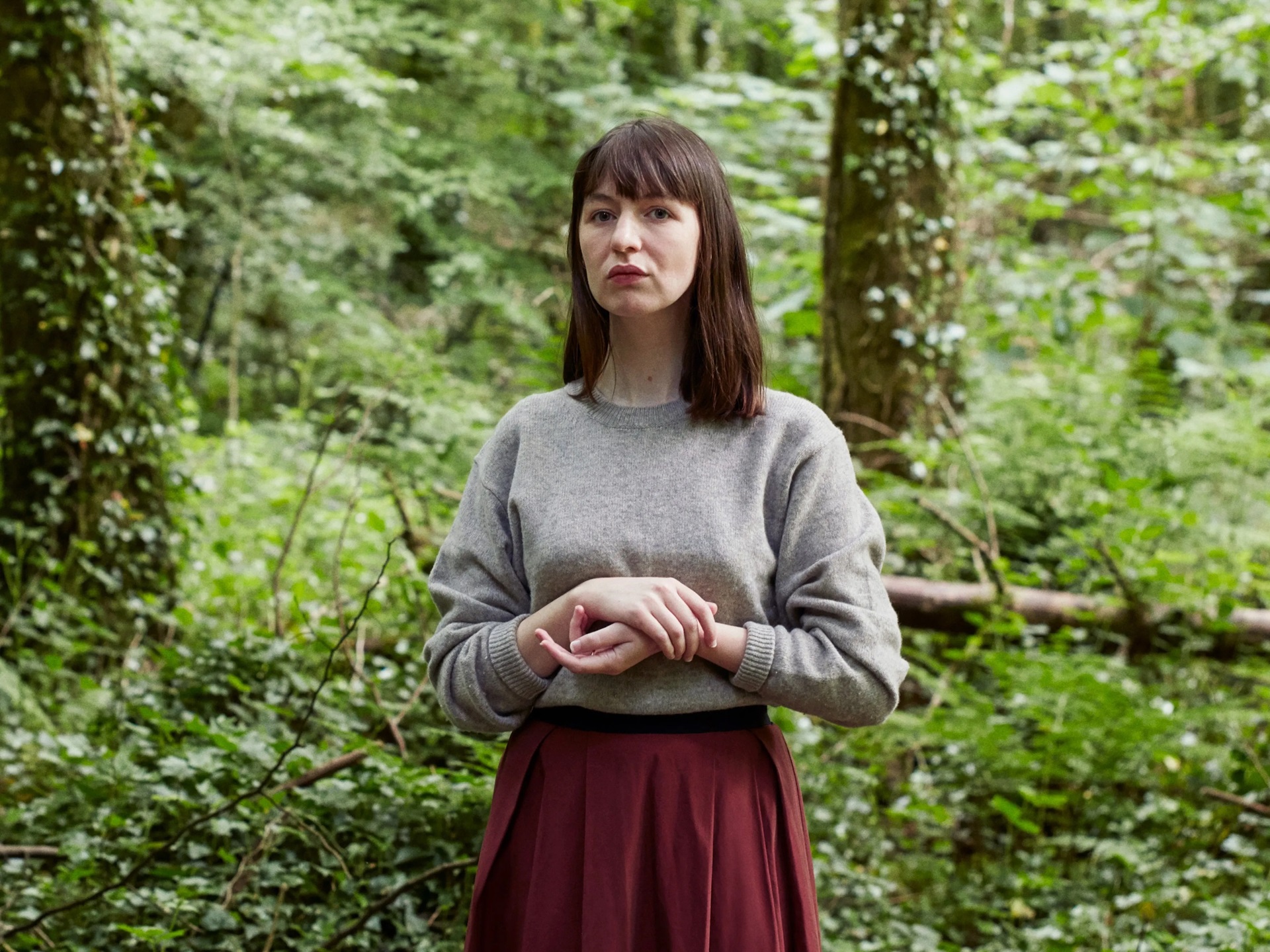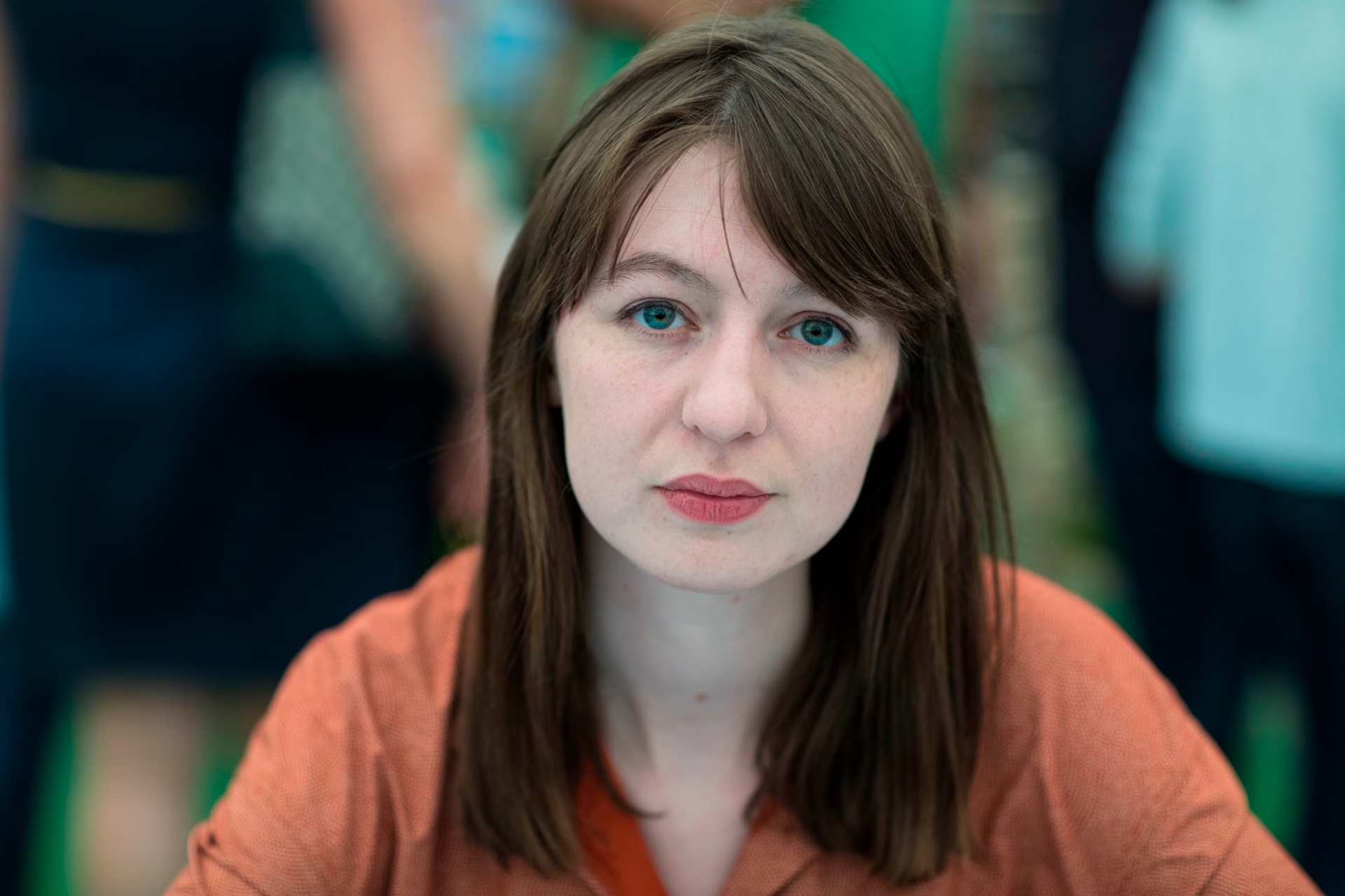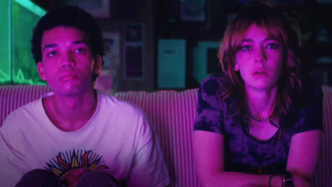Sally Rooney’s rise in literary circles happened with startling speed. In only a few years, she went from an unrecognized debut author to someone whose every move was tracked and debated. Her books appeared prominently in bookstores, television adaptations showcased her work on major streaming platforms, and interviews with her were clipped and shared across social networks. It felt like the kind of success that typically requires decades of steady writing and networking. Factors such as her youth, her spare prose, the quiet interplay of love and class in her work, and the notion that she was capturing a distinctly modern sensibility combined to create an appealing narrative. Once early readers and critics embraced that narrative, it expanded rapidly, making her appear destined for an intense level of fame. Yet a few years later, many consider Sally Rooney to be overrated.
Young audiences latched on to her novels with enthusiasm. Many said she offered a refreshingly honest view of contemporary relationships. Some described her style as “simple but deeply felt,” noting her focus on fragile intimacy, textual communication, and understated class issues. Word spread quickly on social media platforms: posts highlighted how her books felt both low-key and, in some way, essential. After her second novel, people began talking about her work with even greater intensity. It was a time when many readers sought stories that grounded romantic or sexual tension in everyday life, rather than relying on the epic plots common in mainstream bestsellers. Her approach felt closer to how real interactions often occur—clumsy, half-acknowledged, and sometimes lonely.
A TV adaptation soon gained traction, convincing new viewers that these quiet stories held remarkable emotional depth. People who might never have read a literary novel found themselves intrigued, especially once they heard friends say how closely the adaptation mirrored the novels’ careful attention to unspoken yearnings. All at once, Rooney was more than just a writer; she had become a cultural figure. One could see her interviews referenced in major media, hear her name in casual literary discussions, and notice entire book clubs devoted to every meaningful silence in her narratives.
With such a meteoric rise, reactions were bound to vary. Some critics embraced her, calling her a leading voice for anyone caught between youthful ideals and a harsher reality. Others were more cautious, suggesting that huge acclaim could inflate expectations and distort how readers experienced her work. A few skeptics wondered if her success had been fueled partly by a sophisticated marketing campaign. Yet many fans insisted her novels filled an emotional gap in modern fiction, depicting characters immersed in small but intense encounters that readers could recognize from their own lives.

When certain bookstores arranged midnight releases for her latest novel—an event normally reserved for Harry Potter (film series)-style fanfare—it highlighted her remarkable level of fame. Observers were struck by the contrast between her introspective volumes about relationships and the kind of high-profile promotions usually associated with massive pop-culture sagas. Admirers felt the excitement was earned. Detractors saw it as proof that hype can overpower critical discernment. In any case, these attention-grabbing events added to the idea that reading or discussing her work wasn’t just a pastime but also a sign of cultural awareness.
Throughout all this, Rooney herself came across as reserved. She gave interviews but did not chase publicity with much vigor. This quietly self-contained approach boosted her reputation. People projected onto her an image of intellectual aloofness or thought that she was an “anti-celebrity” who found fame despite her private nature. Because her novels were known for being subdued, her calm public manner seemed to fit that aesthetic. Some said that was precisely what made her unique: a writer who radiated an understated but powerful pull.
This odd mix—a writer of hushed stories who nevertheless became a star—symbolized a broader question about how the literary world chooses new favorites. Certain authors have been thrust into that position over the decades, but relatively few have done so with books defined by quiet tension. Many noticed that this phenomenon revealed something about present-day marketing, aesthetics, and the synergy between page and screen. Some praised the alignment, saying that a generation raised on digital communication related strongly to her hesitant characters. Others dismissed the fuss as a passing fad. The sales numbers suggested there was a true appetite for her work, and her novels’ popularity continued to climb.
It didn’t take long for the conversation about her to go beyond her talent as a novelist. People started examining how she had so quickly been crowned a generational voice, without much hesitation from the press or the public. Observers remarked on the well-known pattern where a writer bursts onto the scene, receives overwhelming acclaim, and then faces questions about whether that acclaim has gone too far. Rooney’s emergence followed this pattern but on a shortened timeline. Even now, the debate continues: is she truly extraordinary, or is she another beneficiary of an industry eager for someone new to promote? Regardless, her books keep drawing large numbers of readers, indicating that both hype and real resonance exist alongside each other.
Her fame led to a division in public opinion. On one side were those who praised her nuanced takes on miscommunication and class disparity. On the other were readers who believed the praise was excessive, arguing that many equally skilled writers had never generated such enthusiasm. Supporters cited her raw depiction of young adults caught between lingering adolescence and impending responsibility, while critics claimed her storytelling offered nothing particularly new.
Early coverage of her novels read like a chorus of unanimous approval. Critics commended her deft dialogue, her exploration of sexual vulnerability, and her insights on the subtle fault lines of class. After skimming those first waves of praise, anyone could assume a major talent had arrived. In time, though, it became less unusual to see someone speak up and say they didn’t relate to her subdued approach or felt her characters were repetitive.

A lot of this tension about whether Sally Rooney was overrated was linked to how small her fictional worlds seemed. Although she did show class imbalances—one character might be wealthy, another not—the conflicts remained minor in scope. Her protagonists generally went to good schools or hung out with peers who, if they differed in disposable income, still shared a broad cultural framework. Some readers considered that setup a missed opportunity to delve deeper into social forces. Others defended her novels as intentionally personal, not intended to survey large-scale societal problems.
Growing skepticism about marketing also arose. Glossy magazine profiles, ceaseless internet chatter, and near-universal raves in literary circles sparked some irritation. Why were relationship-focused books eliciting such global interest? Her defenders responded that she possessed genuine talent, and that people had many other authors they could read if they weren’t moved by her style. Critics suggested that her demographic—an intelligent, somewhat progressive, young Irish writer—aligned perfectly with the current literary market’s wish list. Fans applauded her unornamented writing, claiming it offered a needed break from convoluted stories. Her skeptics often bristled at the expectation that everyone should see her as a profound new voice.
Many critics of color who thought Sally Rooney was overrated pointed out how her characters, though introspective and uncertain, seldom faced actual threats or major systemic challenges. Those critics questioned how universal her plots could be when they didn’t address structural barriers. Yet others said she was writing about a middle-class Western slice of life, never claiming to speak for every situation. Yes, the hype implied universality, but that was arguably an effect of over-eager marketing. What she actually offered, supporters insisted, was a close look at emotional confusion that resonates widely, even if it’s focused on a small segment of society.
Another recurring theme was the portrayal of sex and occasional rough or submissive preferences in her novels. Some people commended her openness, arguing that it highlighted how shame and psychological pain might blend into modern intimacy. Others, less impressed, found it repetitive or sensational. Some younger readers saw themselves in characters who felt hesitant about revealing desires, but critics felt the bedroom dynamics overshadowed deeper political or social questions. They argued that so many pages spent on uneasy sex could have been used to explore more urgent problems faced by young people.
Against this backdrop, discussions about the publishing industry lingered. As soon as Rooney became a proven bestseller, major newspapers and media platforms covered her extensively. In some eyes, that overshadowed the quiet nature of her stories. But admirers said her success proved that understated novels could still captivate large numbers of readers. For them, it was proof that real life’s smaller heartbreaks matter to more than just niche literary devotees.
At the center of this was the puzzle of how to distinguish valid praise for her style from hype-driven exaggeration. Many who were leery of the buzz didn’t claim she lacked talent; they just disliked seeing her labeled as “the ultimate voice of modern relationships” or “the definitive Millennial novelist.” They argued that her books, though appealing, weren’t that all-encompassing. Fans found this unfair. They contended she hadn’t begged to be called the voice of her generation. So was it her fault that the market latched onto her and produced a wave of adulation? Or was that the natural result of striking a chord that other recent authors had not yet hit?
Examining her writing clarifies both the appeal and the backlash. She shines a spotlight on relationships that feel profoundly real in their halting nature and awkwardness. It often takes chapters for characters to say what more straightforward writers might convey in a few lines. This pace lends a sense of realism or drags on, depending on one’s tolerance. Her characters treat seemingly small exchanges as significant, reflecting the fear of being misunderstood. Text messages or polite remarks can form the basis of entire plotlines in which unresolved tension stews for days.
She also experiments with the boundary between external speech and interior thought. Because the text doesn’t always mark these shifts clearly, everything feels layered in partial revelations. Admirers interpret it as a lens into the half-formed thoughts that typify contemporary romance. Critics consider it an affectation that obscures clarity. Either way, it’s a defining trait of her style.
Class friction recurs in each novel, though often on a smaller scale. A protagonist who grew up with less money might feel uneasy around a friend or partner from a more privileged background, but the focus remains personal. Readers who want a systematic exploration of inequality come away unsatisfied, while those who prefer small-scale tension appreciate how these differences can warp self-esteem. She does the same for technology: her characters routinely chat online or text, but there’s nothing flashy in how she presents it. It’s merely the fabric of modern socializing. Some interpret that as accurate. Others call it unremarkable, as though she never digs deeper than everyday usage.

The sexual dimension is prominent: many characters treat intimacy as a negotiation with themselves and their lovers. Some admit to enjoying being hurt or acting as if they do; others keep quiet about what they desire. This theme resonates with readers who’ve felt confusion in their own intimate relationships. But it can seem repetitive if introduced in each novel with few variations. The storyline often culminates in heartbreak, but of a quiet sort. Characters drift apart not because of explosive arguments but through missed chances or fear of opening up. For fans, that’s heartbreak by small increments—like real life. Others feel it’s monotonous: the same stifled approach repeated many times.
This distinctive mix—slow pacing, minimal punctuation, mild class drama, halting digital communication, and understated heartbreak—leads some to celebrate her subtle portrayal of how real relationships unravel. Others who think Sally Rooney is overrated consider it a limited approach that never develops. Whether she’s seen as pioneering a new style or repeating old tropes might depend on one’s personal experiences or expectations in fiction. People say she’s the first to so fully explore modern romantic detachment. Her critics note that earlier authors tackled ambiguous longing without garnering such a sweeping global response.
Beyond the page, her rise can be traced to how quickly she was promoted and adapted. Once initial praise set in, her publishers sensed her potential star quality, highlighting her at literary festivals, granting interviews to major outlets, and pushing for television deals. These deals exposed her to far more viewers than a typical quiet novel would reach. A well-produced show with a photogenic cast dramatizing her style of intimacy could attract even those who had never read much contemporary fiction. That broadened audience, in turn, sparked more interest in her work. Online discourse applauded her depiction of texting, precarious relationships, or half-voiced Marxist sympathies. Entire publications ran features labeling her a prime storyteller for her era.
Unsurprisingly, pushback rose in parallel. People started calling her “overexposed,” pointing out that any writer’s uniqueness fades once marketing synergy saturates the conversation. Some critics suggested that the industry recognized her capacity to be a cultural phenomenon and amplified everything about her. Defenders countered that hype can only do so much if the writing doesn’t resonate. They argued that readers wouldn’t keep supporting her if she wasn’t delivering an emotional truth.
Her youth played a part too. She was framed as a perceptive mind who bridged a gap between intellectual seriousness and mass appeal. Sales shot up, and many reading clubs began treating her books as required reading. Over time, the large release events—sometimes ridiculed—proved that her audience was ready to cheer each new publication. That phenomenon fueled a broader discussion of how publishing selects authors to champion. Numerous authors tackle love and class without receiving half the coverage. Perhaps her low-key style and moderate politics made her an attractive sell. Maybe she happened to fill a void: no one else was writing quite so directly about digital-era love.
While she gave interviews, she remained somewhat private. In an odd way, that heightened her mystique: she came off as reserved yet made bold statements about capitalism and inequality. Some accepted her critiques as serious. Others thought they clashed with the fact she was widely promoted across global media. Yet her popularity continued to climb, and people questioned how she could reconcile radical ideas with mainstream success. Fans argued it was feasible to hold left-leaning views while thriving in a capitalist publishing world, while critics said her novels never fully tackled the themes she hinted at in interviews.

The entire conversation about whether Sally Rooney was overrated might have stayed modest if not for the intense effect of social media, where every adaptation or quote sparked long threads. Sometimes, critics tried using her own words to prove she was insincere. Others insisted that her main goal was to depict emotional fragility, that it was unfair to demand more from her. Over time, her name became a shorthand for authenticity versus corporate marketing, grass-roots resonance versus commercial gains, and big ideals versus day-to-day relationships.
The arguments about her writing typically revolve around certain questions. One is whether her world is smaller than her reputation would suggest. Her characters might worry for chapters about a brief text or how to share a personal fear, but they rarely face bigger existential threats. Observers from less privileged backgrounds are skeptical when these stories are claimed to be universal. They ask why so little is said about racism, disability, or other real issues shaping people’s lives.
Another point is her recurring patterns. Whether the story involves an age gap or close friends exploring blurred lines, the structure remains similar: unspoken tension, partial confessions, curious sexual dynamics, and a concluding sense of either tenuous continuation or dissolution. Supporters see her refining an intimate territory, critics see a loop. A further complaint is that her supposed political leanings barely appear in the story, except as conversation topics. Characters talk about class or Marxism again, but the novels focus on romance above all else.
Some who think Sally Rooney is overrated suspect the literary world favored her because her works felt sophisticated enough to sell to a wide audience, while not challenging deeper social norms too much. So the controversy over whether she is overrated also reflects bigger concerns about the business of publishing. However, plenty of readers say it’s pointless to measure her by broad political engagement. They insist her aim is to depict minor emotional earthquakes. This resonates strongly if you’ve experienced that brand of longing or confusion. If you haven’t, you may remain unmoved.
Several who label her “overrated” do not actually hate her writing. They simply reject the narrative that she is the only writer who defines an entire generation’s psyche. They argue that status is too large and obscures other authors who might have tackled the same themes in different contexts. Her fan base believes that framing her as an all-purpose voice is more a marketing tendency than anything she asked for. The result is a cycle where each new release spurs hype, then backlash, then hype again, all while she keeps writing about the same set of concerns.
In the midst of this swirl, the question arises: does she deserve the acclaim because her books speak to readers on an intimate level, or has everything been oversold? One way to reconcile these views is to see her neither as a miraculous genius nor a hollow brand, but as a writer who touched a genuine nerve. She explores delicate friction in relationships, capturing moments of closeness and dread with understated thoroughness. If this approach didn’t resonate, hype wouldn’t carry her so far.
Time will reveal whether she remains at this level of fame or settles into a more moderate place. Some authors who soared early maintained a steady influence without remaining the top headline. Others faded if their style no longer appealed to shifting tastes. For now, she’s in the midst of the push-and-pull. Readers who dismiss her as too insular keep citing the same old patterns. Fans highlight the universal ache of self-doubt that her characters embody.
Meanwhile, the discussion of the literary establishment remains pertinent. Her swift rise was aided by well-timed adaptations, wide coverage, and a potent publicity engine. For her critics, that suggests that “overrated” is inevitable when marketing lifts a writer so high. Her champions see it differently, arguing that genuine emotional power is what keeps her audience engaged.

Ultimately, those who connect with her style won’t be swayed by talk of a narrow range. If they appreciate the hush, the texting, the mild class tension, and the small heartbreak, they’ll stay supportive. Those who dislike that approach probably won’t change their minds. Indeed, these novels either strike a chord or don’t, and there’s little external commentary can do to bridge the gap. It’s possible the real drama lies not in her understated plots but in the question of why we elevate some writers over others.
Perhaps the simplest way to approach her is to ignore the sweeping labels and read the books as they are: stories about tentative young people. If you see your own lingering doubts reflected, you might find them captivating. If you long for fiction that confronts large social or historical forces, you may feel let down. In that sense, maybe the real problem is how people interpret her cultural significance. Overhyping anything can produce disappointment. She’s writing from a specific vantage, focusing on everyday longings and resentments.
Some critics suggest that harping on whether she’s overrated might obscure a more helpful examination of her craft. A more fruitful conversation would ask how precisely she portrays certain emotional corners. Perhaps critics can concede that her tight focus is valid, while fans can agree that calling her the ultimate generational authority goes too far. Such middle ground might emerge if both sides are willing to look at her work with less of a knee-jerk response.
For now, her name remains a litmus test. Some hear it and think of gentle heartbreak, muted sex scenes, and university settings. Others think of excessive hype, shallow stabs at politics, and a writer boosted by an industry that often neglects other deserving voices. Regardless, she is part of contemporary fiction’s fabric. She has shown that introspective narratives about texting, awkward relationships, and partial confessions can connect with many readers. Even if she doesn’t deserve the highest accolades in everyone’s view, she’s made a significant impact on how we talk about modern love stories and whether modest, hesitant characters can be as compelling as any sweeping Game of Thrones-like epic.







